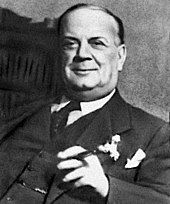
Together with three of his sons, Aldo Gucci (1905–1990), Vasco Gucci (1907–1975), and Rodolfo Gucci (1912–1983), Gucci expanded the company to include stores in Milan andRome as well as additional shops in Florence. Gucci's stores featured such finely crafted leather accessories as handbags, shoes, and his iconic ornamented loafer as well as silks and knitwear in a signature pattern.
The company made handbags of cotton canvas rather than leather during World War II as a result of material shortages. The canvas, however, was distinguished by a signature double-G symbol combined with prominent red and green bands. After the war, the Gucci crest, which showed a shield and armored knight surrounded by a ribbon inscribed with the family name, became synonymous with the city of Florence.
Aldo and Rodolfo Gucci further expanded the company's horizons in 1953 by establishing offices in New York City. Film stars andjet-set travelers to Italy during the 1950s and 1960s brought their glamour to Florence, turning Gucci's merchandise into international status symbols. Movie stars posed in Gucci's clothing, accessories, and footwear for lifestyle magazines around the world, contributing to the company’s growing reputation.
In the early 1990s, Gucci underwent what is now recognized as the poorest time in the company's history. Maurizio riled distributors, Investcorp shareholders, and executives at Gucci America by drastically reining in on the sales of the Gucci Accessories Collection, which in the United States alone generated $110 million in revenue every year. The company’s new accessories failed to pick up the slack, and for the next three years the company experienced heavy losses and teetered on the edge of bankruptcy. Maurizio was a charming man who passionately loved his family's business, but after four years most of the company's senior managers agreed that he was incapable of running the company. His management had had an adverse effect on the desirability of the brand, product quality, and distribution control. He was forced to sell his shares in the company to Investcorp in August 1993. Dawn Mello returned to her job at Bergdorf Goodman less than a year after Maurizio’s departure, and the position of creative director went to Tom Ford, then just 32 years old. Ford had worked for years under the direction of Maurizio and Mello and wanted to take the company’s image in a new direction. De Sole, who had been elevated to President and Chief Executive Officer of Gucci Group NV, realized that if Gucci were to become a profitable company, it would require a new image, and so he agreed to pursue Ford’s vision.
In June 2012, Gucci won a trademark lawsuit against Guess with an award of $4.7 million in damages. On 16 October 2013, Gucci won a trademark counterfeiting and cybersquatting lawsuit, in US federal district court in Fort Lauderdale, Florida, against several online businesses. Gucci won permanent injunction, the "immediate surrender to Gucci of 155 domain names used in the counterfeiting operation", and an award of USD $144.2 million, which includes interest.
On 5 November 2013, the UK's Intellectual Property Office issued a ruling that Gucci has lost the rights to its GG trademark in the UK "to a version of the GG logo in four categories, which encompassed garments such as bracelets, shoulder bags, scarves and coats".German clothing firm Gerry Weber applied to revoke "the trademark on account of its 'nonuse' in the periods from 2003 through 2008 and 2007 through 2012". However, "according to Gucci, the ruling does not affect the use of its GG logo in the region" because “Gucci is the owner of several other valid registrations for this mark, including a Community Trade Mark (covering the European Union) for its iconic GG logo and those rights are directly enforceable in the U.K.











